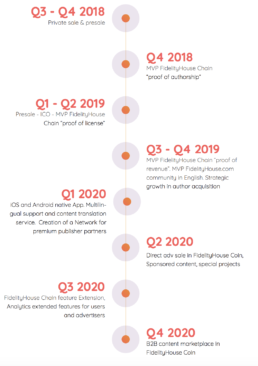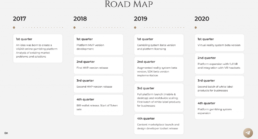Bitcoin Bounces But Bears Still in Control: $BTC Price Analysis
Author: Eustace Cryptus / Source: Bitcoinist.com
Bitcoin price just pulled off a nice 10% bounce with the next level of resistance at $3,700. Let’s take a look at what can happen next?
Bitcoin Price: Market Overview
Bitcoin price $3645.85 +0.59% dropped to a new yearly low at $3,210 and the overall market cap now rests at $110.6 Billion. Clearly, bears are still running the show for BTC and the SEC’s final postponement of a Bitcoin exchange-traded fund decision didn’t seem to help.
Crypto-fanatics will now need to wait until January 24th for the launch of Bakkt and February 26th for a final approval or denial of a Bitcoin ETF from the SEC. If the cryptocurrency markets’ trend reversal is dependent upon either of these events then we’ve got a long way to drop waiting on the unpredictable outcomes of each of these events.
4-HR Chart

Bitcoin $3645.85 +0.59% broke below the $3,550 and $3,400 supports and the cryptocurrency will likely mean that $3,700 will post a stiff resistance to overcome. However, at press time, BTC price has managed to break above the $3,600 mark and now looks poised to test $3,700.
The bounce from $3,210 to $3,615 was...
EOS blockchain deep dive
Source: Crush Crypto

EOS is a blockchain-based development platform designed for building decentralized applications (dApps). Developers can write and deploy smart contracts that power dApps and decentralized autonomous organizations (DAOs).
The platform has a native token with the ticker EOS. EOS tokens were first released as an ERC20 token on the Ethereum blockchain, but a main-net token swap occurred after EOS Version 1.0 was deployed in June 2018.
EOS is often referred to as a decentralized operating system, where holding tokens represents a proportional share in the network bandwidth, storage, and computational resources. DApp developers must stake a certain number of tokens (called RAM) to cover the resources used by their DApp, but they receive those tokens back if the DApp is taken down.
Because of this staking model, users can interact with and use dApps for free. There are also no transaction fees on the EOS network, and block producers earn rewards from newly minted tokens.
EOS was developed and launched by the software company Block.one, who released the software as free and open source. Block.one built the EOS platform to incorporate 3 major features: scalability, flexibility, and usability.
It aims to be scalable by supporting thousands of commercial scale dApps, facilitating inter-blockchain communication, and separating authentication from execution.
It aims to be flexible through the ability to freeze and fix faulty or bug-laced dApps and incorporating generalized role-based permissions.
It also aims to incorporate usability through a web toolkit for interface development, self-describing interfaces, and a declarative permission scheme.
The EOS blockchain uses a Delegated Proof of Stake (DPoS) consensus mechanism with 21 block validators and integrated Byzantine fault tolerance. Delegated Proof of Stake is a consensus mechanism where blocks are validated by a pre-selected group of nodes and it allows for high transaction throughput.
Byzantine fault tolerance is the ability of a network to handle situations where nodes go down or malicious nodes broadcast faulty information. EOS is theoretically Byzantine fault tolerant because 15 out of the 21 block producers are required to confirm a transaction (a 2/3 majority).
For a more detailed discussion on Byzantine fault tolerance and the reason a 2/3 majority is important, refer to our Practical Byzantine Fault Tolerance article.
EOS transactions are typically confirmed within 1 second with a 99.9% certainty, as a new block is created every 0.5 seconds. Dan Larimer stated in an April 2018 blog post that EOS can theoretically support over 1,000 transactions per second and aims to scale to 6-8,000 transactions per second in the future.
EOS also implements a mechanism called Transaction as Proof of Stake (TaPoS), where every transaction must include part of the hash of a recent block header. TaPoS makes it difficult to forge counterfeit chains considering the counterfeit chain would not be able to migrate transactions from the legitimate chain.
- DPoS consensus mechanism: See above section.
- Parallel processing: The ability to do things in parallel on the EOS network allows for faster transaction speeds and more scalability. This is planned for implementation in future versions of EOS.
- Network flexibility: If a DApp is faulty and contains a critical bug, the elected block producers can freeze it until the issue is resolved.
- High transaction throughput: EOS can theoretically support over 1,000 transactions per second with hopes that the platform can scale even higher.
- Ownership model: Owning EOS tokens represents a proportional share of the network resources like bandwidth, storage, and processing power. Developers must prove they hold a sufficient number of tokens to create DApps on the EOS blockchain.
- No transaction fees: Sending EOS tokens to another user or using them for a DApp requires no fee.
- EOS Constitution: The Constitution is a multi-party contract entered into by members of the EOS ecosystem by virtue of their use of the platform. The Constitution has 18 articles that outline the rules and user rights governing the EOS blockchain.
- June 5, 2017: EOS Technical White Paper released.
- June 9, 2017: Draft of the EOS token sale smart contact released.
- September 14, 2017: EOS.IO Dawn 1.0 released – the first release of the EOS.IO software development kit (SDK).
- December 5, 2017: Dawn 2.0 released.
- January 13, 2018: Former Bithumb CEO Richard Jung joined Block.one as Head of Korea.
- January 16, 2018: EOS.IO Blockchain Focused Fund formed.
- January 23, 2018: Block.one and Galaxy Digital announced joint venture for $325 million EOS.IO fund.
- April 5, 2018: Dawn 3.0 released.
- April 6, 2018: Block.one signed a $200 million joint venture partnership to accelerate Asia-focused EOS ecosystem development.
- May 11, 2018: Dawn 4.0 released.
- May 31, 2018: EOS Bug Bounty Program went live.
- June 1, 2018: Version 1.0 of open source EOS blockchain software released and EOS Developer Portal went live.
- June 9, 2018: EOS main-net launched.
- July 19, 2018: EOS Version 1.1.0 released.
- August 14, 2018: EOS Version 1.2.0 released.
- September 18, 2018: EOS Version 1.3.0 released.
- October 17, 2018: EOS Version 1.4.0 released.
Block.one has committed to investing over $1 billion into projects focused on growing the EOS ecosystem through their venture capital firm EOS VC. They also host EOS hackathons around the world and fund prizes for the winning projects.
Projects can receive more information about EOS VC and find an application link here: https://vc.eos.io/about-eos-vc/
There is no updated roadmap for the future technical development of EOS.
The EOS blockchain has a native token called EOS. As of December 7, 2018, the total supply is 1,006,245,120 EOS and the circulating supply is 906,245,118 EOS.
EOS tokens represent a share in the platform’s resources – this includes bandwidth, storage capacity, and processing power. Developers who wish to build dApps that run on the EOS blockchain must prove they hold a certain number of tokens and then stake those tokens to deploy the DApp.
Application developers must stake tokens to cover the nominal cost of account creation to sign up new users for their DApp. In addition, they must stake tokens for any storage, CPU power, or bandwidth used by the user. If the developer takes the DApp down, they receive their staked tokens back.
Developers can refer to the EOS Resource Center for up-to-date staking cost calculations. Baseline costs as of December 7, 2018 are outlined...
Messari launches disclosure registry for cryptocurrency projects
Source: CoinDesk
Messari, an open-source cryptocurrency focused version of the U.S. Securities and Exchange Commission’s EDGAR database, is launching a disclosure registry for token-issuing projects to publicly share information that might otherwise be difficult to find.
The registry, announced Tuesday at CoinDesk’s Consensus: Invest event, will share a range of typically non-public information, including token design, supply details, any audits of the technology, official communication channels, treasury management and details of team members.
Messari founder Ryan Selkis told CoinDesk that the platform is aimed at both standardizing and automating such information disclosures, making it easier for investors or casual observers to learn more about projects of interest.
“What we’re trying to do is make key information about these various crypto assets available to anyone, whether it’s a retail investor, a regulator, an academic or a mutual fund,” he said, adding:
“The most important thing for us is ushering in an era where that is the standard, versus today’s standard which is driven by information asymmetry and insiders, where...
Napston digital currency launches fully automated cryptocurrency exchange
Author: Erik Gibbs / Source: Coingeek

Tech
The Napston cryptocurrency exchange has the potential to turn the industry upside down, if it’s able to produce the results the company expects. The exchange is a fully automated platform that uses a proprietary technology, the “Distributed Artificial Neural Networks (DANN),” to make accurate market predictions. Company officials assert that the platform pools data from “thousands” of independent sources and makes trading possible for even the most inexperienced investor.
According to a press release by the company, “Napston entered the cryptocurrency space in 2013, long before it became mainstream. Over the last five years, the company has been through all the uncertainties and fluctuations of this evolving market. During this phase, Napston was serving only the larger corporate and high net worth individual customers, helping them properly structure and trade their cryptocurrency portfolios. They have spent a high percentage of profits to build the proprietary Distributed Artificial...
ICO Review: FidelityHouse (FIH) Token Sale & Blockchain Social Content Platform
Source: ICO Ranker
- Makes lifecycle management of published content more fair & transparent
- Protects ownership of content, empowering creators & securing returns over time
- Expands upon localized Italian model which has experienced great success to date
FidelityHouse is a social content network that aims to become a global, go-to platform for authors and other publishers of original content. The platform will offer services to assist in the attribution, protection and monetization process of user content and intellectual property.
The FidelityHouse team believes leveraging the technological paradigm of blockchain will make the lifecycle management process of publishing fairer and more transparent, and benefit independent authors and third-party publishers.
Strengthens weak points between creators & platforms
User-generated content is absolutely essential to the online platform business, but right now the process of content creation is broken, to the detriment of creators. There is very little trust and transparency throughout the entire lifecycle of digital content and creators are treated as a commodity. Whether it’s photos, articles, guides, tutorials or recipes, the FidelityHouse team believes content is an investment by the author that deserves to be certified and protected with the potential to earn income over time.
The FidelityHouse chain is based on three cornerstones:
- Proof of authorship — cryptographic and time-stamping technologies track the existence and originality of content at any given moment
- Proof of license — the license granted to an author for specific content is tracked on the blockchain
- Proof of revenue — any value generated by contents is stored and distributed in a transparent way
Not only does FidelityHouse streamline the content publication process, the platform also provides a community for registered users that allows them to follow authors and topics and otherwise customize their experience. The platform’s algorithms help better curate the user experience, with the aim of making FidelityHouse a number-one source for aggregated, original content.
Importance of trustworthy user-generated content, monetization opportunities ensure strong market position
The FidelityHouse team has laid out a thorough plan in...
Inside the big crypto ICOs of 2017
Source: thetokener.com

MobileGo’s goal was to build a cryptocurrency platform for making purchases inside video games and betting on esports, which had become a sizzling-hot trend. The ICO was one of the biggest such deals of the year. But today, few people know where that $53 million is. The startup claims 150 people are working on MobileGo products, but Sergey and Maxim Sholom, the brothers who lead the project, keep company financials private. According to former employees, the Sholoms have moved away from cryptocurrency as a central aspect of their business plan....
BetInReal (BIR) Token Sale & Blockchain Platform: Verified ICO Review
Source: ICO Ranker
- Provides AR/VR social, immersive gaming experience
- Crypto assets ensure fair, reliable outcomes & instant payouts
- Shows possibilities for platform monetization & gaining market foothold
BetInReal (BIR) is an AR/VR gambling platform based on blockchain technology that allows players to have a more interactive and immersive experience, according to the company. The BetInReal global marketplace connects gamers and developers in an ecosystem focused on social gaming.
Evolving geographic market & technological opportunities demand new endeavors
Asia Pacific is emerging as a market leader in the gambling sector, due to rapid economic rise in the region, but “targeted and tailored” online game content is not being developed to satisfy this demand, according to BetInReal’s team. These populations want to use the latest technologies, including VR and AR capabilities. Meanwhile, existing mobile gambling app users want to upgrade to more immersive and reliable technologies. BetInReal’s ability to supply an AR/VR experience will give it an edge in a popular market.
Ample opportunities to monetize the platform, including white label services
Investors often wonder how a project will continue to generate income and BetInReal has several promising profit-generating aspects, including: house edge, the platform’s content marketplace, white label...
3 key post ICO success factors for entrepreneurs
Source: thetokener.com
According to a recent Boston College study, less than 50% of ICOs are still operational after the first four months following their token sale. People are so focused on the fundraising side of the phenomenon that they forget to address the most essential matter: what are the key success factors post-ICO? This question should be crucial for every investor or entrepreneur who intends to devote coins & time to a project. Here are our 3 tips to deliver a product or a service successfully post-ICO.
Creating Favorable Conditions for Delivery
Poor execution or none whatsoever is the major risk entrepreneurs face post-ICO. How can they deliver their project on time and as intended? The answer is usually a mix between the state of progress and the level of trust you place in your team.
At the fundraising stage, the project should already have proven its feasibility with the main features tested, while not being so advanced that the product is still able to spark valuable feedback from investors and potential consumers. Additionally, the vision and skills of the core team must be strong enough to guide the whole group into accomplishing and overcoming any hardships that may occur during the execution phase. Human resource stability at the C-level is also another crucial factor.
At Blockchain.io, we have the expertise of the team behind Paymium - the first EUR/BTC exchange marketplace in Europe – to lead us. They have already delivered an alpha version of Blockchain.io’s platform and started taking input from...
Stocks Edge Higher Despite Trump Tariff Warning; Crypto Top 10 Shake Up
Author: Sam Bourgi / Source: Hacked: Hacking Finance

U.S. stocks pulled ahead on Tuesday, as investors shrugged off calls by President Trump for additional tariffs on Chinese goods. Cryptocurrencies faltered after a solid start to the week as bitcoin SV made its debut.
Stocks Finish Higher
Equities pulled ahead in the final hour of trading, with the S&P 500 Index registering gains of 0.3% to close at 2,682.20. Seven of 11 primary sectors contributed to the gains, led by the defensive consumer staples and utilities categories. Healthcare and the much smaller real estate sector also notched solid gains.

The Dow Jones Industrial Average advanced 108.49 points, or 0.4%, to 24,748.73. Verizon Communications Inc. (VZ) and Walgreens Boots Alliance (WBA) were the biggest contributors.
The technology-focused Nasdaq Composite Index finished flat at 7,082.70.
Trump Threatens Additional China Tariffs
U.S. President Donald Trump told The Wall Street Journal on Monday that he plans to move ahead with harsher tariffs on Chinese goods, lowering the prospect of an imminent trade deal later this week. China had requested that the president hold off on raising tariffs on $200 billion worth of U.S.-bound experts scheduled to come into effect Jan. 1. Trump not only said...
Understanding the blockchain is in 2 mins
Author: M Waqas Raza / Source: Hacker Noon
A friend of mine asked “Tell me about blockchain in 2 mins”
Let me give it a go!
What is it?
Blockchain technology enables peer-to-peer transactions without an intermediary while keeping all transactions data transparent in a decentralised storage and tamper-proof manner.
- It is a foundational technology.
- It provides Internet of Value (WWW provides Internet of Information).
- It enables distribution of trust in place of traditional trusted functions.
- Data or records stored in blockchain are immutable (cannot be altered).
- Its records are traceable/audit-able from origin to end.
- Smart contract features enable the automatic triggering and execution of events when certain predefined conditions are met.
- When applied and working with other technologies, like Internet of Things, it will enable automatic governance.











